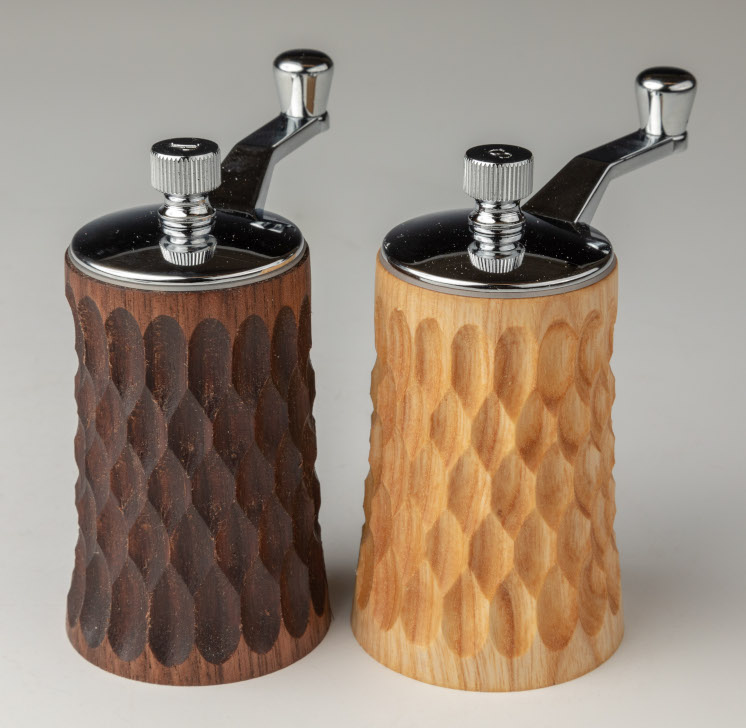Materials Used in Ornamental Turning - Walnut
Ornamentally Turned Objects

Black Walnut

Walnut & Ash
Salt and Pepper Mills
This is an acceptable wood for ornamental turning. But it is the color, and the relative plain-ness of the wood which is the draw.
I have also found it is good for objects that will be handled often. One example is the pepper mill shown to the left.
Prototyping
This is a really good wood for prototyping, and that is what I use it for most often. As a wood that holds shape and doesn't tear out when you get to the edge, it offers a very low cost solution to ensure your shape is what you want, and the approach you want to use works. Also, you can get cutoffs/discarded pieces from other woodworkers often for free.
Work Holding
(no notes at this time)
Ornamental Turning Notes
Working the wood is easy, but requires some pre-planning. End grain work will easily "burn", so you will need to decrease the contact time with the cutter. This can be achieved by slowing the cutter speed (i.e., slowing down the overhead drive), or by increasing the spindle drive speed (I typically run this 40-50% faster), or both.
Different cutter shapes may be helpful. I have found that a fly cutter with a much more rounded edge (rather like a spoon) leaves a better finish. Pointed cutters leave some "fuzz" on the cut.
Finishing
Finishing this is necessary to bring out the beauty of the wood. I typically use Tried & True’s Original Wood Finish.
Other Notes
More information is in The Wood Database.
|
Disclaimer: eMail comments to me at OTBookOfKnowledge @ Gmail.com. The process of woodturning involves the use of tools, machinery and materials which could cause injury or be a health hazard unless proper precautions are taken, including the wearing of appropriate protective equipment. |
